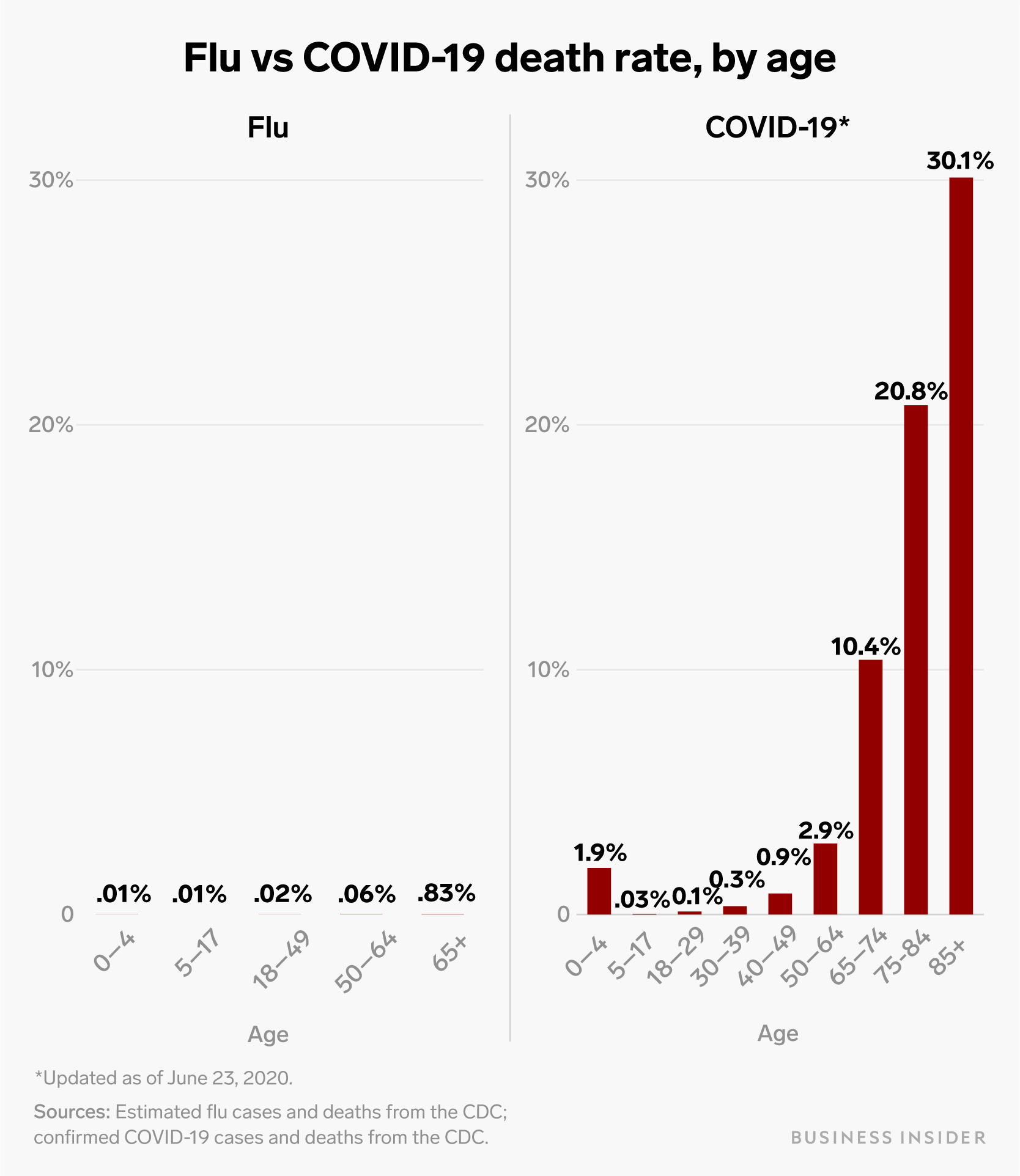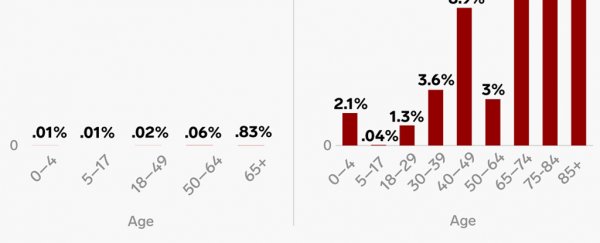Though some symptoms of the flu and the coronavirus overlap, comparing the death rates of the two shows just how much worse the coronavirus is.
While about 0.1 percent of people who got the flu died in the US last year, according to the Centres for Disease Control and Prevention, the coronavirus' death rate is currently about 5.2 percent, based on the reported totals of cases and deaths. That makes the coronavirus' average death rate 52 times higher than that of the flu.
Death rates of both the flu and the coronavirus vary widely between age groups, and both seem to be most fatal among people over 65.
The chart below shows how they compare.
 (Ruobing Su/Business Insider)
(Ruobing Su/Business Insider)
Globally, coronavirus cases have topped 9.1 million and more than 472,000 people have died. So no, this new disease isn't "just another flu."
The flu infects millions of people every year and kills thousands
The number of people killed by influenza each year isn't reported the same way that COVID-19 deaths are – a discrepancy that can cause confusion when comparing the numbers.
The CDC estimates the total number of flu infections in the US via its influenza-surveillance system, which gathers data from state and local partners and projects nationwide totals using infectious-disease models.
The estimations are meant to account for flu deaths that occur outside hospitals and other circumstances in which a person dies without getting a flu test. For that reason, the totals can lag by up to two years because it takes CDC researchers a while to collect flu data and look through death certificates.
During the 2018-19 flu season, about 35 million people in the US contracted the flu and about 34,000 died, according to the CDC. In that season, about one out of every 1,000 people who got the flu died.
Breaking down the numbers by age range reveals a more complex story. Among children, there was about one death per every 10,000 cases. For adults between 50 and 64 years old, about six out of every 10,000 people who got the flu died. For those 65 and older, the rate rose to about 83 out of 10,000 people.
The flu's death rate varies depending on the strains circulating each year. The flu virus mutates rapidly, so people catch different strains, which is why the vaccine isn't 100 percent effective and new vaccines are needed every year.
Over 30 percent of US coronavirus patients over 85 have died
Because of the newness of the coronavirus, calculations of the disease's death rate come from dividing the number of confirmed COVID-19 deaths by the total of confirmed cases. The numbers in the chart above come from the CDC's most recent June report.
In the US, the coronavirus has infected more than 2.3 million people since the first case was reported on January 22. But that case total likely far undercounts the true scope of the outbreak because it includes only those who have gotten tested.
Preliminary data on excess deaths and frontline observations from funeral directors and emergency responders in New York City suggest that the US is undercounting deaths from the virus as well.
The coronavirus' death rate changes constantly, and many health experts have predicted that the rate could drop if more mild and asymptomatic cases are tested and confirmed.
A trend that is unlikely to change with more robust testing, however, is the degree to which the coronavirus is especially deadly for older people and those with preexisting health problems. Because the virus primarily spreads via droplets when people are in close contact and is most fatal for people over 80, nursing homes have become dangerous breeding grounds.
Stopping the flu and the coronavirus from spreading
The flu and coronavirus spread in the same way: via viral particles that travel between people in tiny droplets of saliva or mucus. If a sick person sneezes, coughs, or speaks loudly within 5 feet of someone healthy, the particles could land on the healthy person; if the particles enter the person's eyes, nose, or mouth, the person can become infected.
An average coronavirus patient infects two to 2.5 others. That also makes COVID-19 more contagious than the seasonal flu.
Social distancing limits the risk of infection, however, as does proper hand-washing and avoiding touching your face. A growing body of research also shows masks can significantly prevent coronavirus transmission.
This article was originally published by Business Insider.
Editor's note (29 Jun 2020): An earlier version of the chart in this story displayed incorrect COVID-19 death rates for three age brackets. The error has been fixed.
More from Business Insider:
